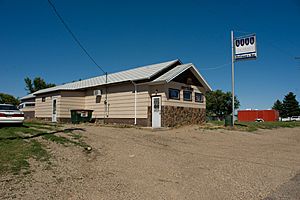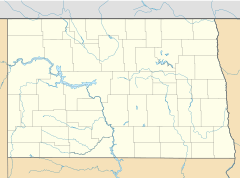Saint Anthony, North Dakota facts for kids
Quick facts for kids
St. Anthony
|
|
|---|---|
 |
|
| Country | United States |
| State | North Dakota |
| County | Morton |
| Elevation | 1,801 ft (549 m) |
| Time zone | UTC-6 (Central (CST)) |
| • Summer (DST) | UTC-5 (CDT) |
| ZIP codes |
58566
|
| Area code(s) | 701 |
| GNIS feature ID | 1031088 |
St. Anthony, also called Saint Anthony, is a small, unincorporated town in southeastern Morton County, North Dakota, United States. An "unincorporated town" means it's a community that isn't officially governed by its own local government, but rather by the county. It's located a short distance west of North Dakota Highway 6, south of Mandan, which is the main city of Morton County. The town uses the ZIP code 58566. In 2018, it was estimated that fewer than 30 people lived there.
This community is also close to several tall towers that send out signals for Bismarck TV and radio stations.
History of St. Anthony
The first people to settle in St. Anthony arrived in 1887. They were a group of German Catholics. A post office, which helps send and receive mail, was opened in Saint Anthony in 1902. It stayed open for many years until 1991.
As of 2018, you can still find some old buildings in the town. There is a school and a church that have been fixed up and look nice again. Also, a new restaurant called Rusty's Saloon and Grill has opened, taking the place of an older bar called Hoffman's Bar.
Famous People from St. Anthony
- Steve Tomac: He was a professional rodeo clown, which is someone who entertains the crowd and helps protect cowboys during rodeo events. He also served in the government of North Dakota as a state senator and a state representative. These are people who are elected to make laws for the state.
Climate in St. Anthony
The weather in this area has big differences between seasons. Summers are usually warm to hot, and sometimes humid. Winters are cold, and can even be very cold. According to a system that classifies climates, Saint Anthony has a humid continental climate. This means it has four distinct seasons with warm summers and cold winters, and enough rain or snow throughout the year.



